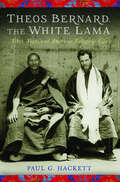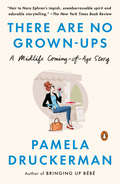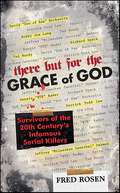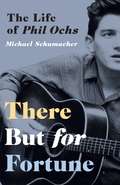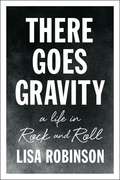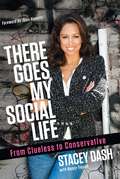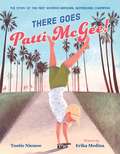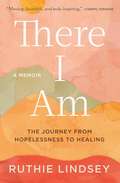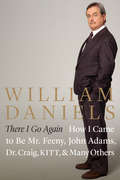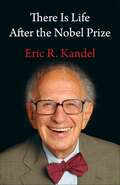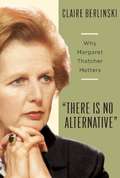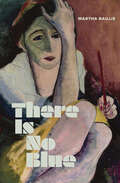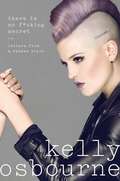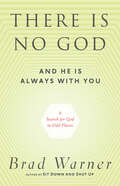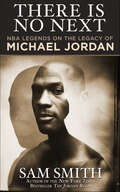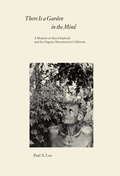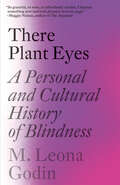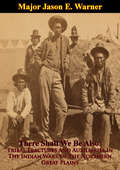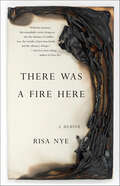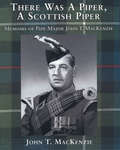- Table View
- List View
Theos Bernard, the White Lama: Tibet, Yoga, and American Religious Life
by Paul HackettIn 1937, Theos Casimir Bernard (1908–1947), the self-proclaimed "White Lama," became the third American in history to reach Lhasa, the capital city of Tibet. During his stay, he amassed the largest collection of Tibetan texts, art, and artifacts in the Western hemisphere at that time. He also documented, in both still photography and 16mm film, the age-old civilization of Tibet on the eve of its destruction by Chinese Communists. Based on thousands of primary sources and rare archival materials, Theos Bernard, the White Lama recounts the real story behind the purported adventures of this iconic figure and his role in the growth of America's religious counterculture. Over the course of his brief life, Bernard met, associated, and corresponded with the major social, political, and cultural leaders of his day, from the Regent and high politicians of Tibet to saints, scholars, and diplomats of British India, from Charles Lindbergh and Franklin Delano Roosevelt to Gandhi and Nehru. Although hailed as a brilliant pioneer by the media, Bernard also had his flaws. He was an entrepreneur propelled by grandiose schemes, a handsome man who shamelessly used his looks to bounce from rich wife to rich wife in support of his activities, and a master manipulator who concocted his own interpretation of Eastern wisdom to suit his ends. Bernard had a bright future before him, but disappeared in India during the communal violence of the 1947 Partition, never to be seen again.Through diaries, interviews, and previously unstudied documents, Paul G. Hackett shares Bernard's compelling life story, along with his efforts to awaken America's religious counterculture to the unfolding events in India, the Himalayas, and Tibet. Hackett concludes with a detailed geographical and cultural trace of Bernard's Indian and Tibetan journeys, which shed rare light on the explorer's mysterious disappearance.
There Are No Grown-ups: A Midlife Coming-of-Age Story
by Pamela DruckermanThe best-selling author of BRINGING UP BÉBÉ investigates life in her forties, and wonders whether her mind will ever catch up with her face.When Pamela Druckerman turns 40, waiters start calling her "Madame," and she detects a new message in mens' gazes: I would sleep with her, but only if doing so required no effort whatsoever. Yet forty isn't even technically middle-aged anymore. And there are upsides: After a lifetime of being clueless, Druckerman can finally grasp the subtext of conversations, maintain (somewhat) healthy relationships and spot narcissists before they ruin her life. What are the modern forties? What do we know once we reach them? What makes someone a "grown-up" anyway? And why didn't anyone warn us that we'd get cellulite on our arms? Part frank memoir, part hilarious investigation of daily life, There Are No Grown-Ups diagnoses the in-between decade when... • Everyone you meet looks a little bit familiar. • You're matter-of-fact about chin hair. • You can no longer wear anything ironically. • There's at least one sport your doctor forbids you to play. • You become impatient while scrolling down to your year of birth. • Your parents have stopped trying to change you. • You don't want to be with the cool people anymore; you want to be with your people. • You realize that everyone is winging it, some just do it more confidently. • You know that it's ok if you don't like jazz. Internationally best-selling author and New York Times contributor Pamela Druckerman leads us on a quest for wisdom, self-knowledge and the right pair of pants. A witty dispatch from the front lines of the forties, THERE ARE NO GROWN-UPS is a (midlife) coming-of-age story--and a book for anyone trying to find their place in the world.
There Are No Secrets: Professor Cheng Man-ch'ing and his Tai Chi Chuan
by Wolfe LowenthalThis book is a light-hearted recounting of the life of the late Professor Cheng M'an Ching. The author describes the time he spent at Professor Cheng's New York Tai Chi studio, and some of the lessons learned.
There But For the Grace of God: Survivors of the 20th Century's Infamous Serial Killers
by Fred RosenThey stared into the faces of pure evil . . . and survived!Ted Bundy . . . Jeffrey Dahmer . . .David "Son of Sam" Berkowitz . . . Dennis Rader, the BTK Killer . . .These are some of the names that strike terror into even the bravest of hearts. Human monsters, they preyed upon the unsuspecting, freely feeding their terrible hungers. Their crimes were unspeakable, as they maimed, tortured, killed, and killed again, leaving so many dead in their bloody wake. But somehow, astonishingly, seven would-be victims fell into the clutches of the century's worst serial killers—and escaped death through courage, divine providence, or just plain luck.This is the remarkable true story of those who lived.
There But for Fortune: The Life of Phil Ochs
by Michael SchumacherThe life and influence of singer Phil Ochs Phil Ochs burst onto the American music scene just as the popularity of folk music was breaking through on the national consciousness. Along with friend and rival Bob Dylan, Ochs wrote some of the most compelling topical music of his time. In There But for Fortune, Michael Schumacher explores the life and career of a singer, songwriter, and political activist whose music resonates today as much as it applied to a divided country a half-century ago. His politically charged songs were covered by Pete Seeger; Joan Baez; Gordon Lightfoot; Peter, Paul and Mary; and a host of others, and such songs as &“I Ain&’t Marching Anymore&” and &“The War Is Over&” became anthems of the anti–Vietnam War movement. He seemed to be performing everywhere, from concerts on college campuses to huge demonstrations, culminating with an appearance at the Democratic National Convention in Chicago in 1968.But as this biography illustrates in painstaking detail, Ochs suffered from a dark side that gravely affected his life and music. Diagnosed as manic depressive, he shifted between incredible highs and debilitating lows that ultimately drove him to suicide at age 36. To piece together his life story, Schumacher interviewed Ochs&’s friends, family members, and fellow musicians; examined his journals and scrapbooks; and even scrutinized his FBI files. While Phil Ochs&’s life might have been plagued by downturn and tragedies, his music is an enduring call to activism and fighting for a better future.
There Goes Gravity
by Lisa RobinsonFrom a legendary music journalist with four decades of unprecedented access, an insider's behind-the-scenes look at the major personalities of rock and roll.<P><P> Lisa Robinson has interviewed the biggest names in music--including Led Zeppelin, the Rolling Stones, John Lennon, Patti Smith, U2, Eminem, Lady Gaga, Jay Z and Kanye West. She visited the teenage Michael Jackson many times at his Encino home. She spent hours talking to John Lennon at his Dakota apartment--and in recording studios just weeks before his murder. She introduced David Bowie to Lou Reed at a private dinner in a Manhattan restaurant, helped the Clash and Elvis Costello get their record deals, was with the Rolling Stones on their jet during a frightening storm, and was mid-flight with Led Zeppelin when their tour manager pulled out a gun. A pioneering female journalist in an exclusive boys' club, Lisa Robinson is a preeminent authority on the personalities and influences that have shaped the music world; she has been recognized as rock jounralism's ultimate insider.<P> A keenly observed and lovingly recounted look back on years spent with countless musicians backstage, after hours and on the road, There Goes Gravity documents a lifetime of riveting stories, told together here for the first time.
There Goes My Social Life: From Clueless to Conservative
by Stacey DashIn 2012, actress Stacey Dash posted a tweet that changed her life. Up until that moment, Dash had lived a typical Hollywood life: Best known for playing Dionne in the 1995 teen classic Clueless, Dash had close friends in the upper echelons of the movie and music industries-and she had an Obama bumper sticker on the back of her BMW. But in 2012, sick of being disappointed by the Obama White House and growing more certain of her conservative beliefs, Dash endorsed Mitt Romney for president on Twitter. The backlash was swift and brutal.In There Goes My Social Life, Stacey Dash explains how she became a conservative, sharing incredible stories of her rough upbringing in South Bronx and her tumultuous Hollywood career to movingly illustrate her strong opinions about the value of a good education, the importance of family, the inanity of political correctness, and the power of personal responsibility.
There Goes Patti McGee!: The Story of the First Women's National Skateboard Champion
by Tootie Nienow2022 Texas Library Association's Texas Topaz Nonfiction Reading List PickTootie Nienow and Erika Medina's There Goes Patti McGee! is an uplifting picture book biography of the first-ever professional female skateboarder and winner of the 1964 National Skateboard Championship for Women.Brought to life by Erika Medina's dynamic and joyful illustrations, There Goes Patti McGee! walks us through Patti first place win in the women’s division of the 1964 National Skateboard Championship. She wowed the judges with what would become her signature move—the rolling handstand. Inspiring and unapologetic, Patti McGee proves that anyone can skate.
There I Am: The Journey from Hopelessness to Healing—A Memoir
by Ruthie Lindsey&“Ruthie is a gifted storyteller with the unique ability to make you feel her emotions as if they're your own. Her book is somehow both bold and tender and utterly, truthfully, authentically her. She doesn't hide from heartbreak or fail to experience the fullness of all the beauty life can hold.&” —Rachel Hollis, #1 New York Times bestselling author of Girl, Wash Your Face and Girl, Stop Apologizing Brain on Fire meets Carry On, Warrior, There I Am is an arresting inspirational memoir about one woman&’s journey from chronic pain and hopelessness to finding joy, redemption, and healing.At seventeen years old, Ruthie Lindsey is hit by an ambulance near her home in rural Louisiana. She&’s given a five percent chance of survival and one percent chance of walking again. One month later after a spinal fusion surgery, Ruthie defies the odds, leaving the hospital on her own two feet. Just a few years later, newly married and living in Nashville, Ruthie begins to experience debilitating pain. Her case confounds doctors and after numerous rounds of testing, imaging, and treatment, they prescribe narcotic painkillers—lots of them. Ruthie has become bedridden, dependent on painkillers, and hopeless, when an X-ray reveals that the wire used to fuse her spine is piercing her brain stem. Without another staggeringly expensive experimental surgery, she could well become paralyzed, but in many ways, she already is. Ruthie goes into the hospital in chronic pain, dependent on prescription painkillers, and leaves that way. She can still walk, but has no idea where she&’s going. As her life unravels, Ruthie returns home to Louisiana and sets out on a journey to learn joy again. She trades fentanyl for sunsets and morphine for wildflowers, weaning herself off of the drugs and beginning the process of healing—of coming home to her body. Raw and redemptive, There I Am is not just about the magic of optimism, but the work of it. Ruthie&’s extraordinary memoir urges us to unlearn the stories of brokenness that we tell ourselves and embrace the wholeness, joy, and healing that lives inside all of us.
There I Go Again: How I Came to Be Mr. Feeny, John Adams, Dr. Craig, KITT, and Many Others
by William DanielsThere I Go Again is a celebrity memoir like no other, revealing the life of a man whose acting career has been so rich that millions of Americans know his face even while they might not recognize his name. William Daniels is an enigma—a rare chameleon who has enjoyed massive success both in Hollywood and on Broadway and been embraced by fans of successive generations. Few of his peers inspire the fervor with which buffs celebrate his most iconic roles, among them George Feeny in Boy Meets World, KITT in Knight Rider, Dr. Mark Craig in St. Elsewhere, and John Adams in the play and film 1776. Daniels guides readers through some of Hollywood’s most cherished productions, offering recollections of entertainment legends including Lauren Bacall, Warren Beatty, Kirk Douglas, Michael Douglas, Audrey Hepburn, Marilyn Monroe, Mike Nichols, Jason Robards, Barbra Streisand, and many more. Looking back on his seventy-five-plus-year career, Daniels realizes that although he never had the courage to say “no” to being an actor, he backed into stardom. With his wife, actress Bonnie Bartlett, by his side, he came to realize that he wound up exactly where he was supposed to be: on the screen and stage.
There Is Life After the Nobel Prize
by Eric KandelOne day in 1996, the neuroscientist Eric R. Kandel took a call from his program officer at the National Institute of Mental Health, who informed him that he had been awarded a key grant. Also, the officer said, he and his colleagues thought Kandel would win the Nobel Prize. “I hope not soon,” Kandel’s wife, Denise, said when she heard this. Sociologists had found that Nobel Prize winners often did not contribute much more to science, she explained.In this book, Kandel recounts his remarkable career since receiving the Nobel in 2000—or his experience of proving to his wife that he was not yet “completely dead intellectually.” He takes readers through his lab’s scientific advances, including research into how long-term memory is stored in the brain, the nature of age-related memory loss, and the neuroscience of drug addiction and schizophrenia. Kandel relates how the Nobel Prize gave him the opportunity to reach a far larger audience, which in turn allowed him to discover and pursue new directions. He describes his efforts to promote public understanding of science and to put brain science and art into conversation with each other. Kandel also discusses his return to Austria, which he had fled as a child, and observes Austria’s coming to terms with the Nazi period. Showcasing Kandel’s accomplishments, erudition, and wit, There Is Life After the Nobel Prize is a candid account of the working life of an acclaimed scientist.
There Is No Alternative
by Claire BerlinskiGreat Britain in the 1970s appeared to a nation be in terminal decline-- ungovernable and rapidly headed for global economic irrelevance. Three decades later, it is one of the richest and most influential countries in Europe and Margaret Thatcher deserves all the credit. As journalist and conservative pundit Claire Berlinski shows, Thatcher's transformation of Britain was no simple task. Her jarring economic reforms often came at a high human cost as inefficient subsidies, welfare programs, and industries were abandoned entirely. While Thatcher's legacy has been the subject of passionate debate, Berlinski argues that we should be on her side. Socialism is on the rise and only countries willing to abide by Thatcher's philosophy will prevail. ""There Is No Alternative"" provides a valuable account of Margaret Thatcher's visionary triumphs in the fight for free enterprise.
There Is No Alternative: Why Margaret Thatcher Matters
by Claire BerlinskiGreat Britain in the 1970s appeared to be in terminal decline-ungovernable, an economic train wreck, and rapidly headed for global irrelevance. Three decades later, it is the richest and most influential country in Europe, and Margaret Thatcher is the reason. The preternaturally determined Thatcher rose from nothing, seized control of Britain’s Conservative party, and took a sledgehammer to the nation’s postwar socialist consensus. She proved that socialism could be reversed, inspiring a global free-market revolution. Simultaneously exploiting every politically useful aspect of her femininity and defying every conventional expectation of women in power, Thatcher crushed her enemies with a calculated ruthlessness that stunned the British public and without doubt caused immense collateral damage. Ultimately, however, Claire Berlinski agrees with Thatcher: There was no alternative. Berlinski explains what Thatcher did, why it matters, and how she got away with it in this vivid and immensely readable portrait of one of the towering figures of the twentieth century.
There Is No Blue
by Martha BaillieTHE GLOBE AND MAIL: BOOKS TO READ IN FALL 2023Martha Baillie’s richly layered response to her mother’s passing, her father's life, and her sister’s suicide is an exploration of how the body, the rooms we inhabit, and our languages offer the psyche a home, if only for a time. Three essays, three deaths. The first is the death of the author’s mother, a protracted disappearance, leaving space for thoughtfulness and ritual: the washing of her body, the making of a death mask. The second considers the author’s father, his remoteness, his charm, a lacuna at the centre of the family even before his death, earlier than her mother’s. And then, the shocking death of the author’s sister, a visual artist and writer living with a diagnosis of schizophrenia, who writes three reasons to die on her bedroom wall and then takes her life."Martha Baillie’s novels are thrillingly, joyously singular, that rare combination of sui generis and just plain generous. That There Is No Blue, her memoir, is all of those things too, is no surprise; still, she has gone somewhere extraordinary. This triptych of essays, which exquisitely unfolds the “disobedient tale” of the lives and deaths of her mother, her father, and her sister, is a meditation on the mystery and wonder of grief and art making and home and memory itself. It made me think of kintsugi, the Japanese art of repair, in which the mending is not hidden but featured and beautifully illuminated. Baillie’s variety of attention, carved out of language, is tenderness, is love." – Maud Casey, author of City of Incurable Women"This is a stunning memoir, intense and meticulous in its observations of family life. Baillie subtly interrogates and conveys the devastating mistranslations that take place in childhood, the antagonism and porousness of siblings, and the tragedy of schizophrenia as it unfolds. I couldn’t put it down." – Dr. Lisa Appignanesi, author of Mad, Bad and Sad and Everyday Madness"Exquisite." – Souvankham Thammavongsa, author of How to Pronounce Knife"I am grateful for this profound meditation on family and loss.” – Charlie Kaufman, filmmaker"This strange, unsettling memoir of outer life and inner life and their bizarre twining captures the author’s identity by way of her mother’s death, her sister’s failing battle with mental illness, and the mysterious figure of her father. It combines anguished guilt, deep tenderness, and bemused affection in highly evocative, often disturbing prose. Its brave honesty is amplified by a persistent lyricism; its undercurrent of fear is uplifted by a surprising, resilient hopefulness. It is both a plea for exoneration and an act of exoneration, an authentic meditation on the terrible difficulty of being human." – Andrew Solomon, author of The Noonday Demon
There Is No Ethan: How Three Women Caught America's Biggest Catfish
by Anna AkbariPart memoir, part explosive window into the mind of a catfisher, a thrilling personal account of three women coming face-to-face with an internet predator and teaming up to expose them. In 2011, three successful and highly educated women fell head over heels for the brilliant and charming Ethan Schuman. Unbeknownst to the others, each exchanged countless messages with Ethan, staying up late into the evenings to deepen their connections with this fascinating man. His detailed excuses about broken webcams and complicated international calling plans seemed believable, as did last minute trip cancellations. After all, why would he lie? Ethan wasn't after money — he never convinced his marks to shell out thousands of dollars for some imagined crisis. Rather, he ensnared these women in a web of intense emotional intimacy. After the trio independently began to question inconsistencies in their new flame's stories, they managed to find one another and uncover a greater deception than they could've ever imagined. As Anna Akbari and the women untangled their catfish&’s web, they found other victims and realized that without a proper crime, there was no legal reason for &“Ethan&” to ever stop. THERE IS NO ETHAN catalogues Akbari's experience as both victim and observer. By looking at the bigger picture of where these stories unfold — a world where technology mediates our relationships; where words and images are easily manipulated; and where truth, reality, and identity have become slippery terms — Akbari gives a page-turning and riveting examination of why stories like Ethan's matter for us all.
There Is No F*cking Secret: Letters From a Badass Bitch
by Kelly OsbournePeople ask Kelly Osbourne all the time: “What’s your secret?”Kelly Osbourne may not always have been a typical role model, but no one can say that her perspective isn’t hard won after spending three decades in the spotlight: from growing up completely exposed to the heavy metal scene—replete with crazy antics most readers have only begun to hear about—to spending her teenage years as the wild middle child of an even wilder Ozzy Osbourne, to the family’s popular stint on their wacky eponymous reality show. Since then, Osbourne has forged her own path as a style icon and powerful woman in the media who isn’t afraid to tell it like it is and be honest with her fans. But being the daughter of a music legend hasn’t always been glamorous; growing up Osbourne is an experience that Kelly wouldn’t trade, but there are battle scars, and she is finally now ready to embrace and reveal their origins.Told as a series of letters to various people and places in her life, There Is No F*cking Secret gives readers an intimate look at the stories and influences that have shaped Osbourne’s highly speculated-about life, for better or for worse. The stories will make readers’ jaws drop, but ultimately, they will come away empowered to forge their own path to confidence, no matter how deranged and out of control it may be, and to learn the ultimate lesson: that there just is no f*cking secret.
There Is No God and He Is Always with You: A Search for God in Odd Places
by Brad WarnerCan you be an atheist and still believe in God? Can you be a true believer and still doubt? Can Zen give us a way past our constant fighting about God? Brad Warner was initially interested in Buddhism because he wanted to find God, but Buddhism is usually thought of as godless. In the three decades since Warner began studying Zen, he has grappled with paradoxical questions about God and managed to come up with some answers. In this fascinating search for a way beyond the usual arguments between fundamentalists and skeptics, Warner offers a profoundly engaging and idiosyncratic take on the ineffable power of the “ground of all being.”
There Is No Next: NBA Legends on the Legacy of Michael Jordan
by Sam SmithThirty years after Michael Jordan&’s first NBA game comes an oral history of his legendary career, told by the men who played with him and against him, coached him, and witnessed first-hand the iconic greatness of the most dominant athlete sports has ever seen.Featuring interviews with: Larry Bird • Magic Johnson • Phil Jackson • Reggie Miller • Isiah Thomas • Reggie Theus • Chris Mullin • Doug Collins • Dominique Wilkins • Steve Kerr • John Paxson • David Stern • Gregg Popovich • Derek Harper • Bill Walton • Karl Malone • Horace Grant • Joe Dumars • Danny Ainge • B.J. Armstrong • Marv Albert • Grant Hill • Jerry Colangelo • Bill Cartwright • Jerry Reinsdorf • Johnny Bach • Rod Thorn • Rick Barry • Kevin Loughery • David Axelrod • President Barack Obama • and many more!Written by Sam Smith—author of the New York Times bestseller THE JORDAN RULES and recent inductee into the NBA Hall of Fame—THERE IS NO NEXT assembles a cast of Hall-of-Famers, teammates, opponents, coaches, and others who experienced the ferocious drive and unparalleled greatness that defined Jordan&’s career. Packed with previously untold stories and stunning insight into Jordan and his six championships, THERE IS NO NEXT is the last word on why there has never been, and will never be, another Michael Jordan.
There Is Nothing for You Here: Finding Opportunity in the Twenty-First Century
by Fiona HillA celebrated foreign policy expert and key impeachment witness reveals how declining opportunity has set America on the grim path of modern Russia—and draws on her personal journey out of poverty, as well as her unique perspectives as an historian and policy maker, to show how we can return hope to our forgotten places. <p><p> Fiona Hill grew up in a world of terminal decay. The last of the local mines had closed, businesses were shuttering, and despair was etched in the faces around her. Her father urged her to get out of their blighted corner of northern England: “There is nothing for you here, pet,” he said. <p><p> The coal-miner’s daughter managed to go further than he ever could have dreamed. She studied in Moscow and at Harvard, became an American citizen, and served three U.S. Presidents. But in the heartlands of both Russia and the United States, she saw troubling reflections of her hometown and similar populist impulses. By the time she offered her brave testimony in the first impeachment inquiry of President Trump, Hill knew that the desperation of forgotten people was driving American politics over the brink—and that we were running out of time to save ourselves from Russia’s fate. In this powerful, deeply personal account, she shares what she has learned, and shows why expanding opportunity is the only long-term hope for our democracy.
There Is a Garden in the Mind
by Paul A. LeeThere Is a Garden in the Mind presents an engaging look at the work and life of pioneering organic gardener Alan Chadwick and his profound influence on the organic farming movement. In this wide-ranging and philosophical memoir, author Paul Lee recounts his first serendipitous meeting with Chadwick in Santa Cruz, California, in 1967, and their subsequent founding of the Chadwick Garden at UC Santa Cruz, the first organic and biointensive garden at a U.S. university. Today, there are few who would dispute the ecological and health benefits of organically produced food, and the student garden project founded by Chadwick and Lee has evolved into a world-renowned research center that helps third-world farmers obtain high yields using organic gardening. But when Chadwick and Lee first broke ground in the 1960s, the term "organic" belonged to the university's chemists, and the Chadwick Garden spurred a heated battle against the whole system of industrial existence. Lee's memoir contextualizes this struggle by examining the centuries-old history of the conflict between industrial science and organic nature, the roots of the modern environmental movement and the slow food movement, and the origin of the term "organic." His account of Chadwick's work fills in a gap in the history of the sustainable agriculture movement and proposes that Chadwick's groundwork continues to bear fruit in today's burgeoning urban garden, locavore, and self-sufficiency movements.Table of contents:Chapter one The English Gardener ArrivesChapter two The English Gardener Goes to WorkChapter three The Garden PlotChapter four Goethe the Vitalist contra Newton the PhysicalistChapter five Urea! I Found It!Chapter six USA and Earth DayChapter seven The MethodChapter eight Chadwick DepartsChapter nine A Moral Equivalent of WarChapter ten The Death of ChadwickChapter eleven California Cuisine and the Homeless Garden ProjectChapter twelve A Biodynamic Garden on Long IslandChapter thirteen Chadwick's LegacyFrom the Trade Paperback edition.cy
There Plant Eyes: A Personal and Cultural History of Blindness
by M. Leona GodinFrom Homer to Helen Keller, from Dune to Stevie Wonder, from the invention of braille to the science of echolocation, M. Leona Godin explores the fascinating history of blindness, interweaving it with her own story of gradually losing her sight. There Plant Eyes probes the ways in which blindness has shaped our ocularcentric culture, challenging deeply ingrained ideas about what it means to be &“blind.&” For millennia, blindness has been used to signify such things as thoughtlessness (&“blind faith&”), irrationality (&“blind rage&”), and unconsciousness (&“blind evolution&”). But at the same time, blind people have been othered as the recipients of special powers as compensation for lost sight (from the poetic gifts of John Milton to the heightened senses of the comic book hero Daredevil). Godin—who began losing her vision at age ten—illuminates the often-surprising history of both the condition of blindness and the myths and ideas that have grown up around it over the course of generations. She combines an analysis of blindness in art and culture (from King Lear to Star Wars) with a study of the science of blindness and key developments in accessibility (the white cane, embossed printing, digital technology) to paint a vivid personal and cultural history. A genre-defying work, There Plant Eyes reveals just how essential blindness and vision are to humanity&’s understanding of itself and the world.
There Shall We Be Also: Tribal Fractures And Auxiliaries In The Indian Wars Of The Northern Great Plains
by Major Jason E. WarnerFrom its beginning in the American Revolution to its current conflicts in Afghanistan and Iraq, the United States (U.S.) Army has had to deal with tribal societies. In order to succeed in tribal societies it is essential that the U.S. Army understand tribal structures and the fractures in tribal societies that present opportunities and possible solutions.Tribal structures create an environment in which conflict over resources and status creates traditional enemies between the tribes. It further weakens internal tribal loyalty as loyalty resides at the lowest level within the tribe that can provide resources, increase the group's status and security. These characteristics create fractures within tribal societies that create an atmosphere in which it is possible to use tribal auxiliaries to resolve conflicts or issues within complex tribal environments.The Indian Wars on the northern Great Plains from 1865 to 1890 provide some of the best examples in which tribal fractures created the opportunity to use tribal auxiliaries. By closely examining specific events during the Indian Wars, it is possible to identify the characteristics of tribal structures and societies that create the opportunity for using tribal auxiliaries as well as the fact that they provide a unique method for resolving conflict and issues within tribal societies. This study specifically focuses on events that occurred on the northern Great Plains as the U.S. Army sought to subdue and bring into compliance the Sioux and Cheyenne tribes. By examining tribes that assisted the U.S. Army, it is possible to identify tribal fractures and motivations behind why tribes such as the Crow and Pawnee faithfully served as allies to the U.S. Army. It is also possible to identify what led to the collapse of the Sioux and Cheyenne alliance, which resulted in Sioux and Cheyenne bands turning on one another by supporting the U.S. Army against others that refused to comply.
There Was A Fire Here: A Memoir
by Risa NyeLess than a month before her 40th birthday, a devastating firestorm destroys Risa Nye’s home and neighborhood in Oakland, California. Already mourning the perceived loss of her youth, she now must face the loss of all tangible reminders of who she was before. There Was a Fire Here is the story of how Nye adjusts to the turning point that will forever mark the “before and after” in her life—and a chronicle of her attempts to honor the lost symbols of her past even as she struggles to create a new home for her family.
There Was A Piper, A Scottish Piper: Memoirs of Pipe Major John T. MacKenzie
by John T. MackenzieThe memoirs of John T. MacKenzie reveal a truly remarkable man: a highly respected authority on highland piping with a commitment to tradition and excellence in performance. Born in Edinburgh, Scotland, John T. was a student of piping at age nine. Enlisted in the Scots Guards, he saw active service in the war zones of North Africa, participated in the Liberation of Norway and was later posted to active duty in the Malaysian jungle. John T. MacKenzie bears personal witness to the horrors and valour of warfare. Throughout, his devotion to highland piping remained, and remains, in the forefront of his life. Appointed personal piper to the Royal Household in 1946, John T. MacKenzie has piped at numerous ceremonial events in Europe and North America. His recruitment as a Pipe Major to the Royal Canadian Air Force in 1952 brought him to Canada, and ultimately to Glengarry County, where his contributions to piping are legendary.
There Was Light
by Jean StoneAutobiography of a University: a collection of essays by alumni of the University of California, Berkeley
